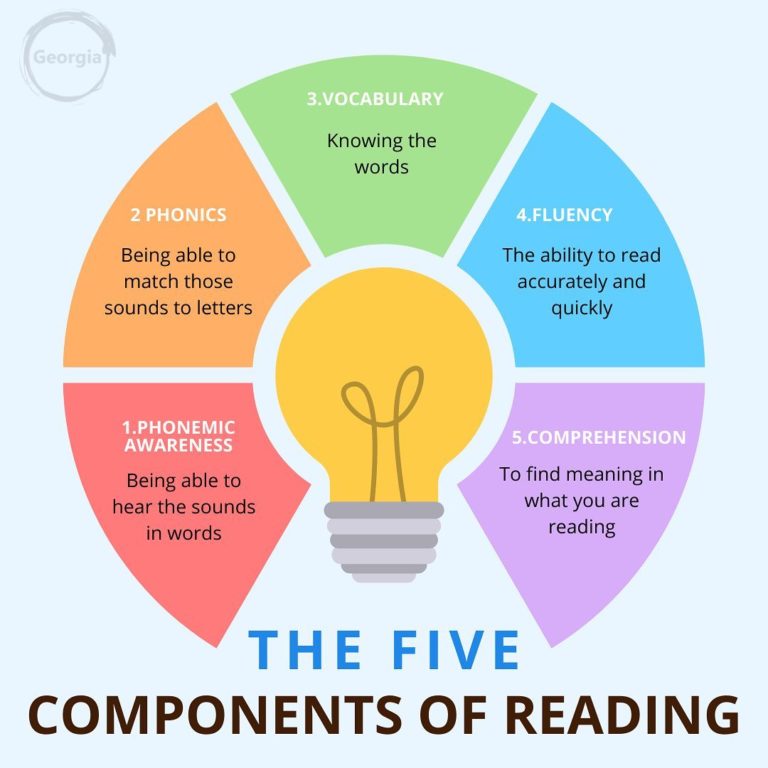Overview
Reading skills are built on five separate components as identified by the National Reading Panel in the United States. These are phonics, phonemic awareness, vocabulary, fluency, and comprehension. These components work together to create strong, rich, and reliable reading abilities, but they’re often taught separately or in uneven distribution.
What Are the Five Components?
ONE Phonemic Awareness
Phonemic awareness is the ability to identify, manipulate, and work with individual sounds (phonemes) in spoken words. It involves understanding that words are made up of sounds and being able to segment, blend, and manipulate those sounds.
TWO Phonics
Phonics refers to the relationship between sounds (phonemes) and their corresponding written symbols (graphemes). It involves understanding the alphabetic principle, where letters or letter combinations represent specific sounds. Phonics instruction helps children decode words by recognising and blending the sounds represented by letters.
THREE Vocabulary
Vocabulary refers to the knowledge of words and their meanings. It includes both oral vocabulary (words we understand and use in speech) and reading vocabulary (words we understand when reading). Building a rich vocabulary is crucial for reading comprehension and overall language development.
FOUR Fluency
Fluency is the ability to read text accurately, smoothly, and with appropriate speed and expression. Fluent readers can decode words effortlessly and automatically, allowing them to focus on comprehension and meaning. Fluency is developed through practice and exposure to a wide range of texts.
FIVE Comprehension
Comprehension is the ultimate goal of reading. It is the ability to understand and make meaning from the text. Comprehension involves various skills and strategies, such as activating prior knowledge, making connections, asking questions, making inferences, and summarising. Effective reading instruction emphasises the development of comprehension skills alongside the other components.
IN SUMMARY
These five components are interconnected, and effective reading instruction addresses each component to help students become proficient readers. It’s important to note that these components are not isolated skills, but rather integrated abilities that work together to facilitate successful reading.






